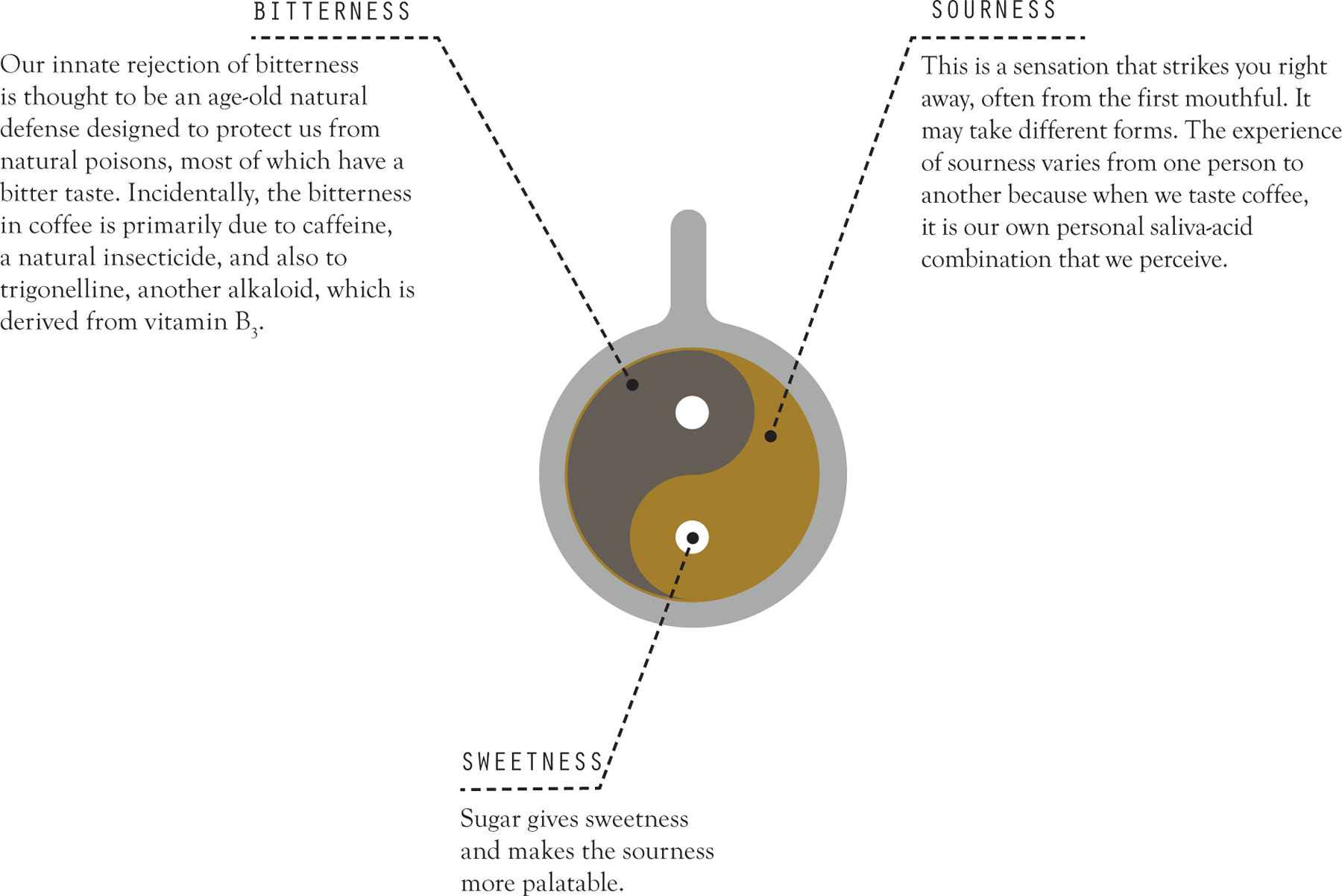ESPRESSO: THE TASTING EXPERIENCE

The body
The body refers to the substance or consistency of the coffee. Viscosity is an important feature of espresso, which is ten times more concentrated than a filter coffee. The high pressure causes the oils to emulsify, giving a sense of thickness in the mouth. One might refer to an espresso as being full-bodied, thick, viscous, or syrupy, as opposed to watery, thin, flat, or light…


Astringency
This is one of the most unpleasant physical sensations you might experience in an espresso. It involves a mechanical tensing of the mucous membranes, accompanied by a feeling of roughness and dryness, which is amplified by the bitterness and acidity.


The taste
Of the five primary tastes conveyed by the nonvolatile molecules that are detected by the taste buds, those that dominate in the case of coffee are sourness, sweetness, and bitterness.

Primary tastes under the microscope
Here is a guide to help you recognize the different flavors you may encounter in coffee, and especially to help you tell the difference between sourness and bitterness. The illustrations give an example of a food or drink that exhibits that particular flavor, to enable you to identify the flavor we are referring to.


GRAPEFRUIT

CHICORY

LIME
Citric acid develops in beans cultivated at high altitude. It is a sign of having been freshly harvested.

TONIC WATER
Quinic acid is to blame for astringency. The direct product of the breakdown of chlorogenic acids, it is one of the few acids that continues to develop even at an advanced stage of roasting.

APPLE
Malic acid, with its metallic taste, is typical of some coffees from East Africa (Burundi, Rwanda). But it can also be an indicator of a premature harvest.

COLA
Phosphoric acid, which, unlike the others, is inorganic, is characteristic of the Kenyan varieties SL28 and SL34.

VINEGAR
Acetic acid, when present in excessive quantities, gives a tartness that is deemed negative. Like quinic acid, it continues to develop even at an advanced stage of roasting.
